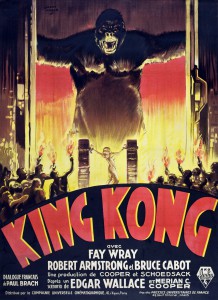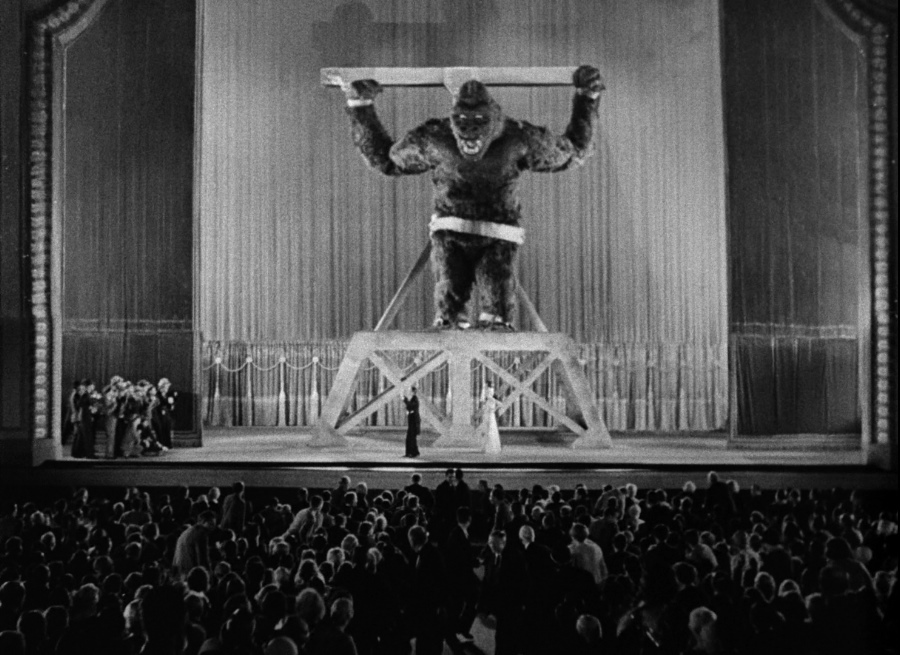
With the exception of Pearl Harbor and 9/11, the United States has never really been on the receiving end of a massive, all-encompassing national trauma perpetrated by an outside force. Still, in both cases, the U.S. provided earth-shattering retaliation to both aggressors. As such, channelling either event into a straight-up victim narrative would result in a particularly tasteless version of having one’s cake and eating it. Although a position of world dominance doesn’t give many chances for the externalization of traumatic angst brought on from the outside, it offers ample opportunity for introspection. American genre stories are reliably about internal fears and anxieties, and American culture looms so large that many of these fears and anxieties end up being universal. But King Kong, released two decades before Godzilla, serves the same ostensible purpose as the original kaiju movie: dealing with a national traumatic event through a larger-than-life beast. Only in this case, it isn’t being on the receiving end of a bombing, it’s being on the perpetrating end of slavery.

King Kong is a legendary film with good reason. It was a massive hit and its influence still reverberates more than 80 years on. Willis O’Brien’s sophisticated stop-motion animation and clever use of rear projection were all state-of-the-art when the film was released in 1933. It irreversibly upped the ante for what trick photography could do in the context of feature-length narrative filmmaking. But its racial politics are thorny at best. It begins with all-white crew steaming on over to the third world (in this case the jungles of Southeast Asia) in order to make a buck off the black locals. It ends with a racist caricature of blackness dying because of his infatuation with a white woman. Admittedly, this could read as excessively glib, but the core motivating factor of the film is white exploitation of foreign indigenous culture. Consider this: as the second act of the film comes to a close, the film producers and their crew engage in the ultimate act of colonial hubris. That is to say, they literally steal the local object of worship so that well-off metropolitan can gawk at how “exotic” it is. They basically put Kong to work on American shores after being kidnapped.
King Kong isn’t just about strictly about slavery, but it is most definitely about the machinery of exploitation. Firstly, there’s the more subtle kind of exploitation that goes on before the ship even leaves the port. Fay Wray’s casting is a direct result of the talent agent not wanting to send someone on a suicide mission with a director known for his dangerous shoots. True to form, said director essentially fools the ship’s crew into sailing blind to an uncharted island. But the exploitation becomes decidedly slave-flavoured once the crew gets the brilliant idea to sedate Kong and haul him to America. Once there, when the beast has the audacity to break loose from his captors with the one person who hasn’t shackled or otherwise harmed him, he gets shot for his troubles. The ringleader can barely manage a shrug. As far as exploitation goes, raw power that can’t or won’t be harnessed isn’t worth the air it breathes.

There’s a terrible allegorical elegance to King Kong’s final major set piece: the Other being gunned down by war planes while perched on New York’s towering monument to capitalism. Unlike Godzilla and his ilk, Kong isn’t presented as a chaotic force, or a scientific accident, or the wrath of God. He is representative of a problem the protagonists brought upon themselves. And unlike most kaiju, the way King Kong is represented is semiotically loaded. Centuries of racist iconography make it hard to ignore that Kong is a pretty blatant stand-in for African slave labour, and the black Other as a whole, and in its own strange way when Fay Wray is involved, interracial relationships. Sadly it doesn’t take a position on any of this; it merely presents it as the status quo, which sours the viewing experience and dulls the visceral thrill of the craftsmanship on display. But it does offer a glimpse into what makes American monster movies tick: self-examination through the monstrous.
– Derek Godin

